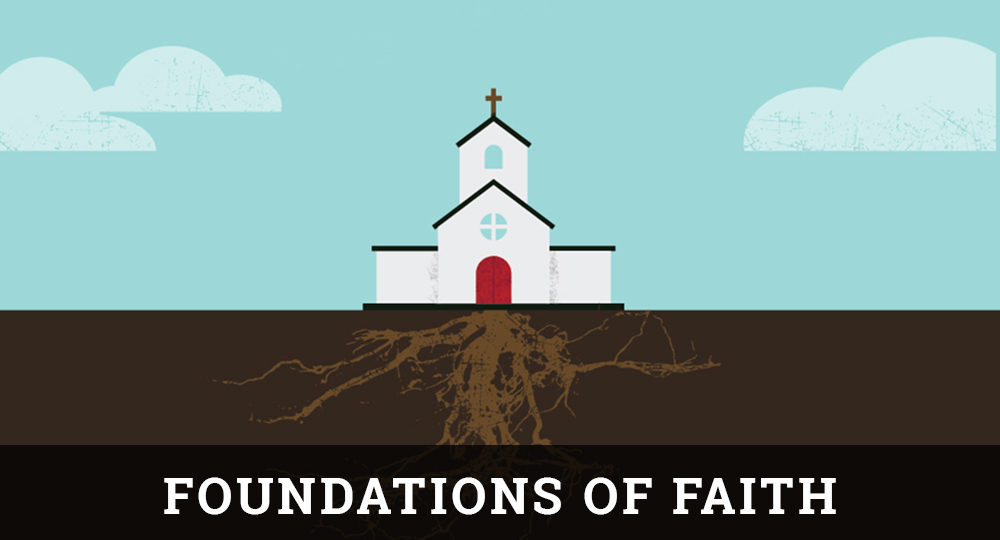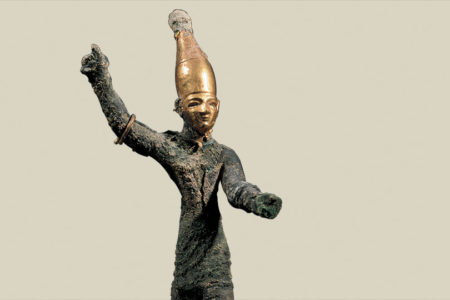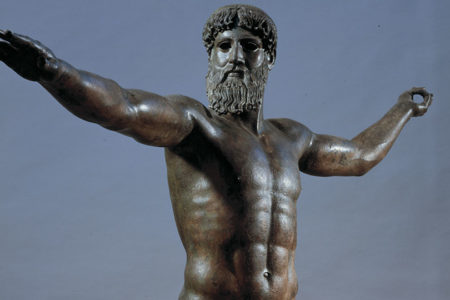The Sinlessness of Jesus Christ Conclusion
The previous article in this series examined one issue among several that are prompted by the biblical teaching that Jesus Christ was totally sinless. This article addresses two further issues related to His sinlessness.
The Second Issue
If it is true that Jesus Christ was sinless, what is meant by the Apostle Paul’s statement that God sent “his own Son, in the likeness of sinful flesh” (Rom. 8:3)?
The word translated “flesh” refers to “a human being in contrast to God and other supernatural beings” (William F. Arndt and F. Wilbur Gingrich, A Greek-English Lexicon of the New Testament, p. 751). He did not say that God sent His Son in the likeness of flesh because some might understand that to mean that Jesus Christ was similar to human beings but was not truly human. That interpretation would deny the humanity of the incarnated Christ and thereby contradict what Paul and other writers of the New Testament taught (see Col. 1:21–22; 1 Jn. 4:23) [James M. Stifler, The Epistle to the Romans, p. 136].
In addition, he did not say that God sent His Son in sinful flesh because that would mean that Christ became sinful through His incarnation. “That would have contradicted the sinlessness of Jesus for which the New Testament is jealous throughout” (John Murray, The Epistle to the Romans in The New International Commentary on the New Testament, p. 280).
Instead, Paul did say that God sent His Son “in the likeness of sinful flesh” (italics added). William F. Arndt and F. Wilbur Gingrich explained the significance of the word translated “likeness” in this statement as follows: “In the light of what Paul says about Jesus in general it is safe to assert that his use of our word is to bring out both that Jesus in his earthly career was similar to sinful men and yet not absolutely like them” (A Greek-English Lexicon of the New Testament, p. 570). In other words, through his careful combination of terms, Paul purposed to emphasize two truths concerning Jesus Christ: First, through incarnation Christ became as fully human as other human beings, but, second, He did not become a sinful human being. “No other combination of terms could have fulfilled these purposes so perfectly” (Murray, Romans, p. 280). The fact that Adam was fully human but not sinful before his fall demonstrates that a person does not have to be sinful in order to be fully human.
The Third Issue
The third issue is: Was Jesus Christ peccable or impeccable throughout His earthly life?
The words peccable and impeccable are derived from the Latin verb peccare, which means to sin, and the Latin noun peccator, which means sinner (Collins Latin-English English-Latin Dictionary p. 601). In light of this, the word peccable, as applied to Jesus Christ, means able to sin, and the word impeccable, in relationship to Him, means not able to sin.
True Christians agree that Jesus Christ never sinned. Christ Himself claimed that He never sinned (Jn. 8:46). Christians disagree, however, concerning whether or not He was able to sin. Some believe that because Christ was fully human, He was able to sin (was peccable). Others are convinced that because He was also absolute deity, He was not able to sin (was impeccable).
Problems Related to Impeccability and Their Proposed Solutions
The doctrine of impeccability teaches that Jesus Christ, as a person, was not able to sin. This teaching appears to have several problems.
The first problem: The incarnate Jesus Christ was a sinless human being with a sinless nature, but so was Adam before his fall. The fact that Adam fell away from God indicates that he was able to sin. If Adam was susceptible to sinning while being a sinless human being with a sinless human nature, doesn’t it follow that Jesus Christ, “the last Adam” (1 Cor. 15:45), was also susceptible to sinning?
The proposed solution to the first problem: The incarnate Jesus Christ had something Adam did not have—a divine nature. Thus, He was fully God as well as fully man. Because holiness is one of the basic attributes of the divine nature, it is impossible for God to sin. Because Christ had a complete divine nature as well as a complete human nature, and because deity is far more powerful than humanity, certainly Christ’s deity overruled any susceptibility to sin that may have been in the human nature. Christ’s deity made it impossible for Him to sin as a person. Thus, as a person, Jesus Christ was not susceptible to sinning.
The second problem: If the divine nature of Christ overruled His human nature, weren’t the attributes of the human nature violated, and didn’t this cause Him to cease being human?
The proposed solution to the second problem: Because Adam had a complete human nature but no sin prior to the fall, it is then evident that sin is not an essential attribute of the human nature. Human nature can be fully human without sin. Thus, if a divine nature prevents a sinless human nature from sinning, it is not violating any attribute of that human nature. It is simply keeping that human nature what it has always been—a sinless human nature.
The reverse, however, would not be the same. Because holiness is an essential attribute of the divine nature, if the human nature were to overrule the divine nature and cause Christ to sin as a person, the divine nature would be violated and Christ would cease being divine.
The third problem: If Christ was not able to sin, aren’t the Scriptures wrong to say that Christ was tempted by Satan (Mk. 1:13) and that He “was in all points tempted like as we are” (Heb. 4:15)? If He was not susceptible to sinning as we are, was He truly tempted in all points like we are?
The proposed solution to the third problem: Temptation is not the same as susceptibility to sin. To tempt means “to allure, appeal strongly to, or invite” (The American College Dictionary, Text Edition, p. 1247). Thus, temptation is the invitation or solicitation to sin. By contrast, to be susceptible means to be “capable of being affected by” something (Ibid., p. 1220). Thus, susceptibility is the capability of responding to the invitation (temptation) to sin. Jesus Christ was truly tempted (invited to sin) both by Satan and by circumstances during His life on earth, but, as a person, He was not capable of responding to the invitation to sin.
Christ could be tempted (invited to sin) in the realm of His humanity, but we must conclude that He could not be tempted in the realm of His deity because the Bible states that “God cannot be tempted with evil” (Jas. 1:13) His deity was impeccable (incapable of being invited to sin and incapable of accepting the invitation).
Thus, as a theanthropic person (a God-Man), Jesus Christ was temptable in His humanity but was not capable of sinning. Any influence through the temptability of His humanity was overruled by the impeccability of His deity. In addition, as noted in previous articles in this series, Christ did not have a sin nature prompting Him to respond to the temptations. The Apostle John implied this when he wrote concerning Christ, “In him is no sin” (1 Jn. 3:5).
In conjunction with the issue of Christ’s impeccability, the comments of Matthew and Mark in relation to Christ’s tempting by Satan immediately after His baptism are very enlightening. Mark wrote, “And immediately the Spirit driveth him into the wilderness. And he was there in the wilderness forty days, tested by Satan” (Mk. 1:12–13a). Matthew’s comment reveals the purpose of the Holy Spirit’s action: “Then was Jesus led up by the Spirit into the wilderness to be tested by the devil” (Mt. 4:1). The combination of the strong word translated “driveth” and the statement of purpose for the Spirit’s action indicates that God wanted this confrontation to take place between His incarnate Son and Satan when Jesus was about to begin His public ministry. God had a purpose for His Son’s being subjected to the most intense temptations possible to humanity, administered by the most skilled and powerful tempter possible, while under the most extreme conditions of human deprivation possible (when His humanity would be most temptable). God’s purpose was to demonstrate His Son’s impeccability—the fact that as a person He could not sin, even when His humanity was subjected to the most intense temptations from the most skilled, powerful tempter, while it was most vulnerable, over an extended period of time. This demonstration of Jesus Christ’s impeccability clearly identified Him as the sinless, spotless Lamb of God, the only person qualified to take away the sin of the world.
The Proof of Christ’s Impeccability
His immutability requires it: Because Christ is immutable (unchangeable, Heb. 13:8), all the attributes of deity that He had before His incarnation He continued to have in His incarnation. One attribute of deity is holiness, which makes it impossible for God to sin. This divine A attribute made it impossible for Christ to sin before His incarnation. Thus, His immutability required that it be equally impossible for Him to sin as a person in His incarnation.
His omnipotence requires it: Because Christ’s divine nature was both holy and omnipotent, it certainly would use its omnipotence to prevent Christ from sinning. Because His human nature was not omnipotent, it could never overrule the omnipotence of His divine nature. Thus, Christ could not sin because He had an infinitely powerful divine nature that hated sin.
The sovereignty of God requires it: Whatever God sovereignly decrees is certain to happen. The Scriptures declare that God “doeth according to his will in the army of heaven, and among the inhabitants of the earth, and none can stay his hand, or say unto him, What doest thou?” (Dan. 4:35). God Himself said, “This is the purpose that is purposed upon the whole earth, and this is the hand that is stretched out upon all the nations. For the LORD of hosts hath purposed, and who shall annul it? And his hand is stretched out, and who shall turn it back?” (Isa. 14:26–27).
In eternity past, God sovereignly decreed a plan for history (Eph. 3:11). The fulfillment of that plan centered in the person and redemptive work of the incarnate Jesus Christ (Rev. 13:8). For this reason, Jesus said that “he must go unto Jerusalem … and be killed, and be raised again the third day” (Mt. 16:21). The word translated “must” refers to what is necessary (Walter Grundmann, “dei,” Theological Dictionary of the New Testament, vol. II,. 21). The word relates to the will of God, “which fashions history, according to its plan” (Ibid., p. 22). Thus, it “expresses a necessity which lies in the very nature of God and which issues in the execution of His plans” (Ibid., p. 23). Jesus’ statement indicated that for God’s plan for history to be fulfilled, it was necessary that He complete the work of redemption through His death and resurrection.
For Jesus Christ to complete the work of redemption, He had to be totally sinless. Thus, the fulfillment of God’s plan for history was dependent upon the incarnate Jesus Christ’s not sinning. If there had been any possibility that Jesus could have sinned, the fulfillment of God’s plan would have been uncertain. The very fact that God’s sovereign decrees are certain to be fulfilled required the impossibility of Christ’s sinning.







